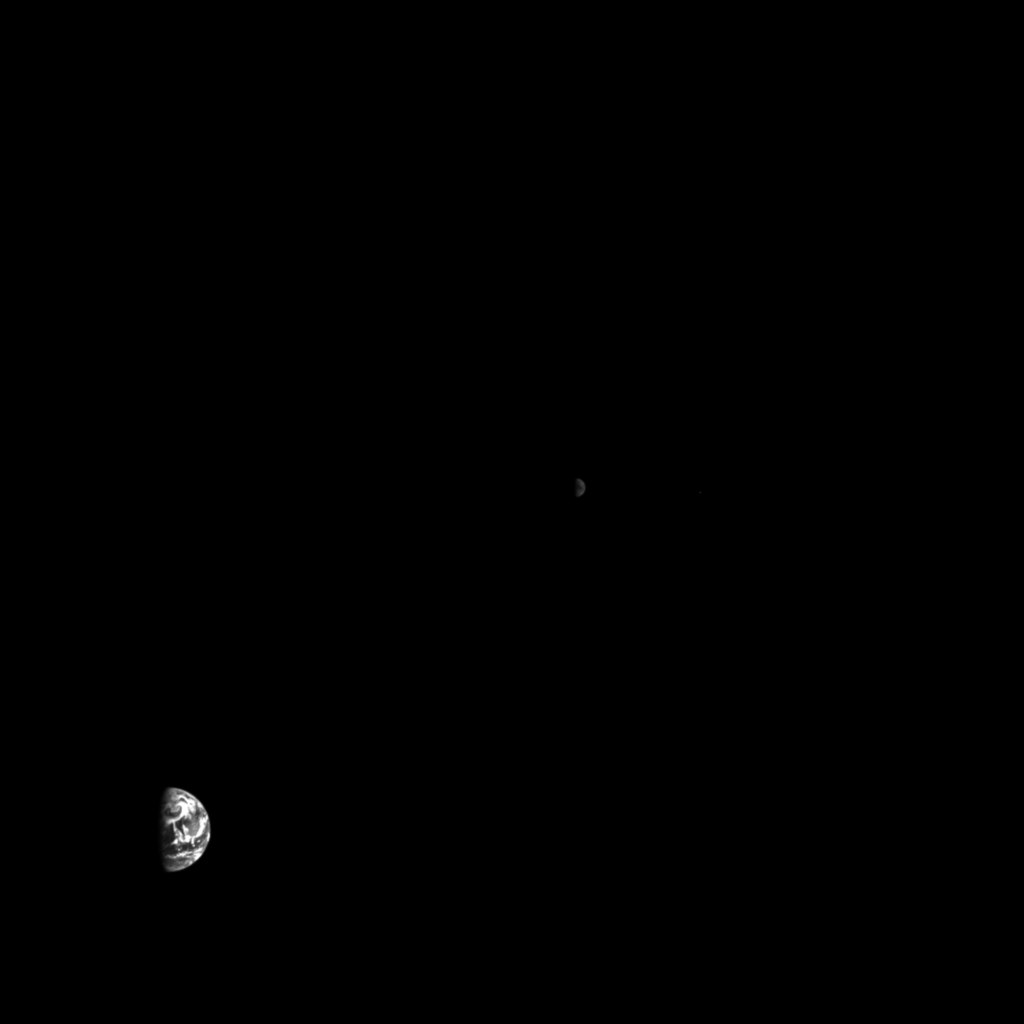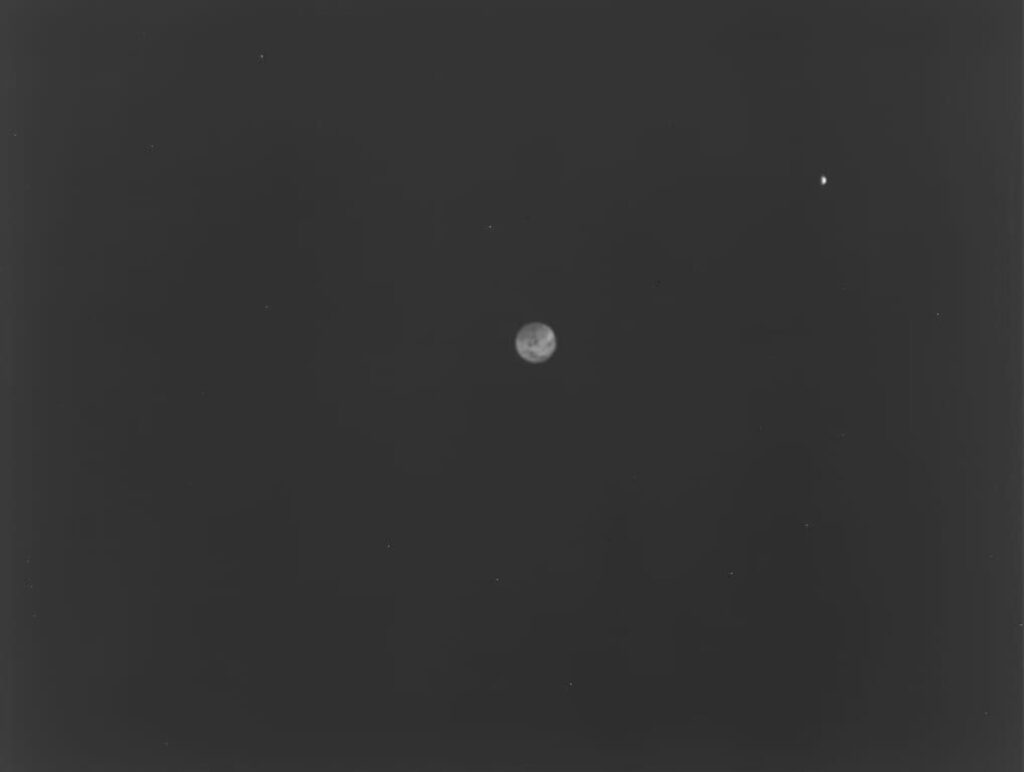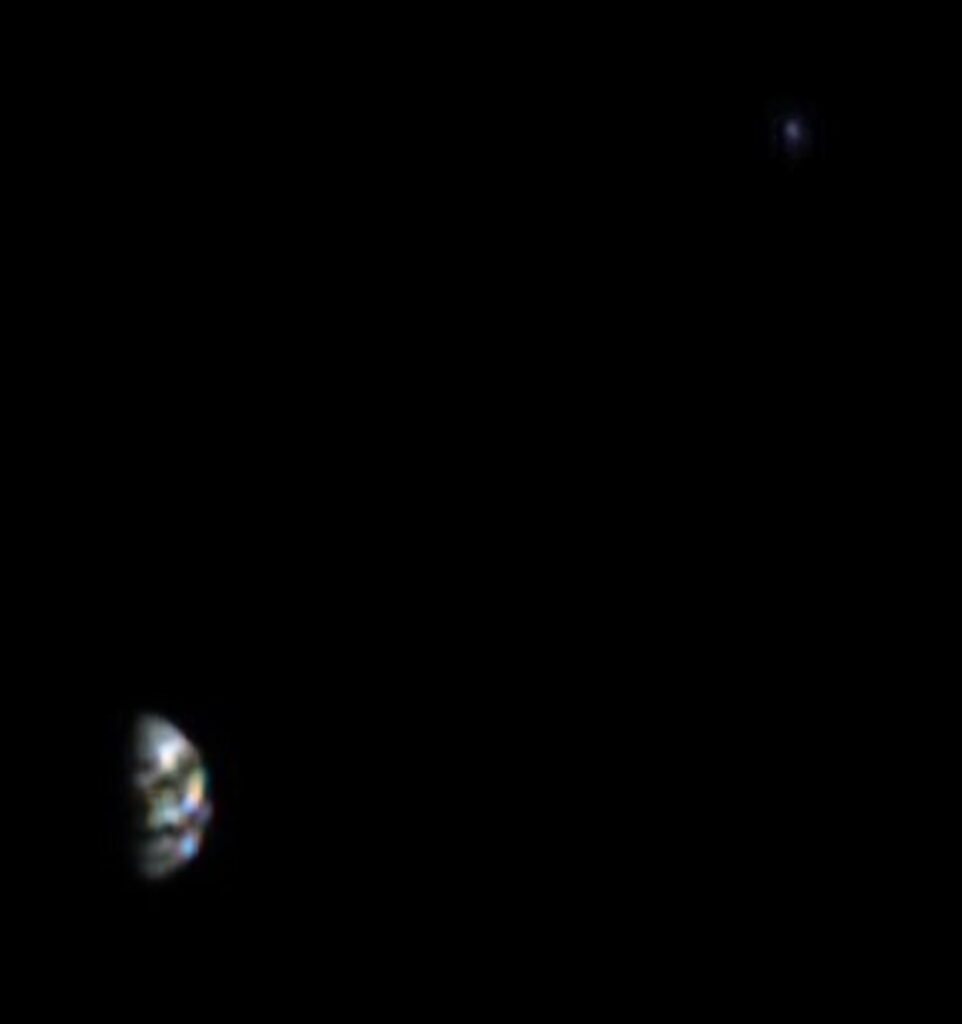The European vehicle Hera has transmitted its first images to Earth. They show our planet and its companion Moon.
The Hera mission was launched on October 7. The spacecraft is headed toward the double asteroid Didymos. In September 2022, a NASA probe crashed into its satellite Dimorphos. The bombardment was part of an experiment to test methods of deflecting dangerous celestial bodies away from Earth. Hera is expected to study the location of the impact and how it affected the asteroid pair.

Shortly after Hera’s launch, engineers activated its cameras. On October 10 and 11, the spacecraft took several farewell images of the Earth and the Moon as part of a test of their functionality. The first image was captured on October 11 using the AFC monochrome camera. It is designed for both navigation and scientific research. At the moment of shooting the spacecraft was at a distance of 1.6 million kilometers from our planet.

The second image was taken with the TIRI camera. It takes images in the mid-infrared range and can determine the temperature of the asteroid’s surface. Subsequently, scientists can determine physical properties such as roughness, particle size distribution, and porosity from a chart of “thermal inertia” (how quickly the temperature of an area changes). During the time of imaging the vehicle was at a distance of 1.4 million kilometers from our planet.

The last image was obtained with the HyperScout H spectrometer. It takes images in the wavelength range of 650-950 nm, which provides an opportunity to determine the mineral composition of the surface. The colors it produces are coded so that blue marks the shortest wavelengths and red marks the longest wavelengths. At the time of imaging the device was at a distance of 1.4 million kilometers from our planet.
Earlier we reported on where the “building blocks” of life came to Earth from.
According to ESA


